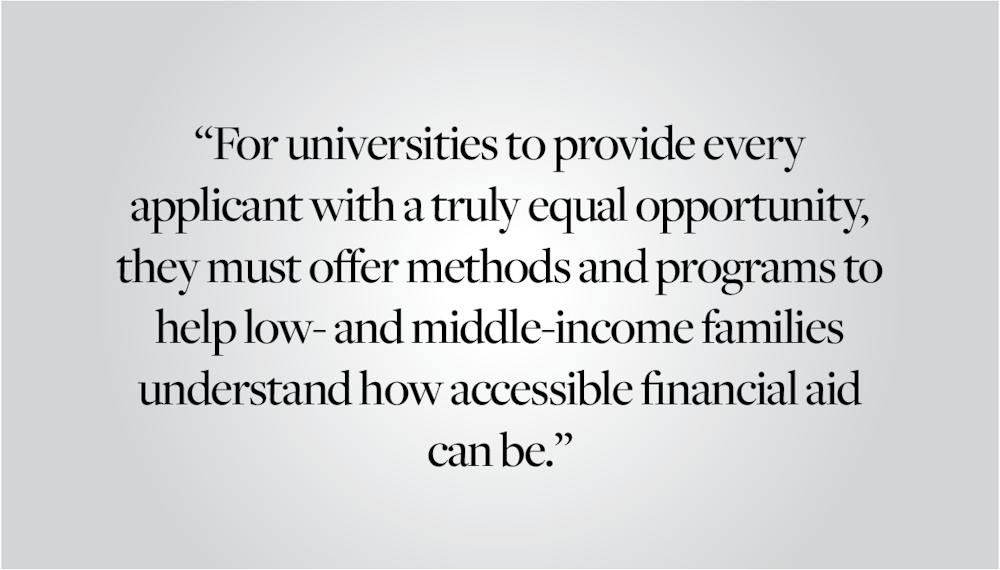In early February, Brown announced that the University would once again raise tuition by 4.5%, bringing annual tuition to and total direct charges to . Since 2013, Brown’s tuition has gone up every year, increasing by over in 10 years. And while Brown gives some of the most financial aid in the country, its socioeconomic diversity remains a point that has only been exacerbated in the past few years. The of university tuition nationwide and the representation of middle-income students at elite universities will only worsen until universities themselves make higher education seem feasible for families that struggle to meet expected family contributions.
The struggle of low- and middle-income students at top universities has been apparent for years, and while plenty of time and effort has gone into analyzing and tracing the problem, little has been done to find a solution. One issue preventing low-income students from even applying to these institutions is a phenomenon called . Sticker shock refers to the hesitance families may feel when applying to schools due to the total listed cost, despite the possibility of financial aid. If neither of your parents went to an elite university — or attended college at all — the number of unfamiliar terms and daunting forms and figures can seem impossible to understand. Many families don’t realize how drastically their family contribution would differ from the price listed on the school’s website.
Another factor that may pose a barrier to some is the average application fee of per university. If you are a high school senior with dreams of attending a top 20 university, applying to is usually par for the course due to the competitiveness of elite college admissions. This issue has been partially resolved for low-income families, as their fees are often waived, and most high-income families don’t see that fee as anything more than a mild inconvenience. But a family making the median annual income in America ( in 2022) likely does not want to pay upwards of $1000 in application fees, especially when tuition costs at elite universities exceed what they make in a year.
Top universities provide low-income students with unique opportunities for social mobility. But institutions house a number of higher income students, and they tend to accept the students from the lower middle class. The initiatives to include low-income students in these universities have been relatively successful, so the next step would be to expand these efforts to include middle-income students. Making financial aid information more accessible and easier to understand would put families applying to colleges for the first time at ease, and would broaden the range of universities that students perceive to be attainable.
Going to a university like Brown is a fantastic opportunity, but if you come from a family that makes much less than the average student, it can be isolating and uncomfortable. If the number of students in similar situations gets smaller every year, it is only going to make the experience worse.
For universities to provide every applicant with a truly equal opportunity, they must offer methods and programs to help low- and middle-income families understand how accessible financial aid can be. As students and families approach the intimidating process of applying to top universities, the best thing they can be is informed and prepared. And if increasing tuition is , then Brown should put some of that money into helping underrepresented demographics navigate the complex system that is college admissions.


